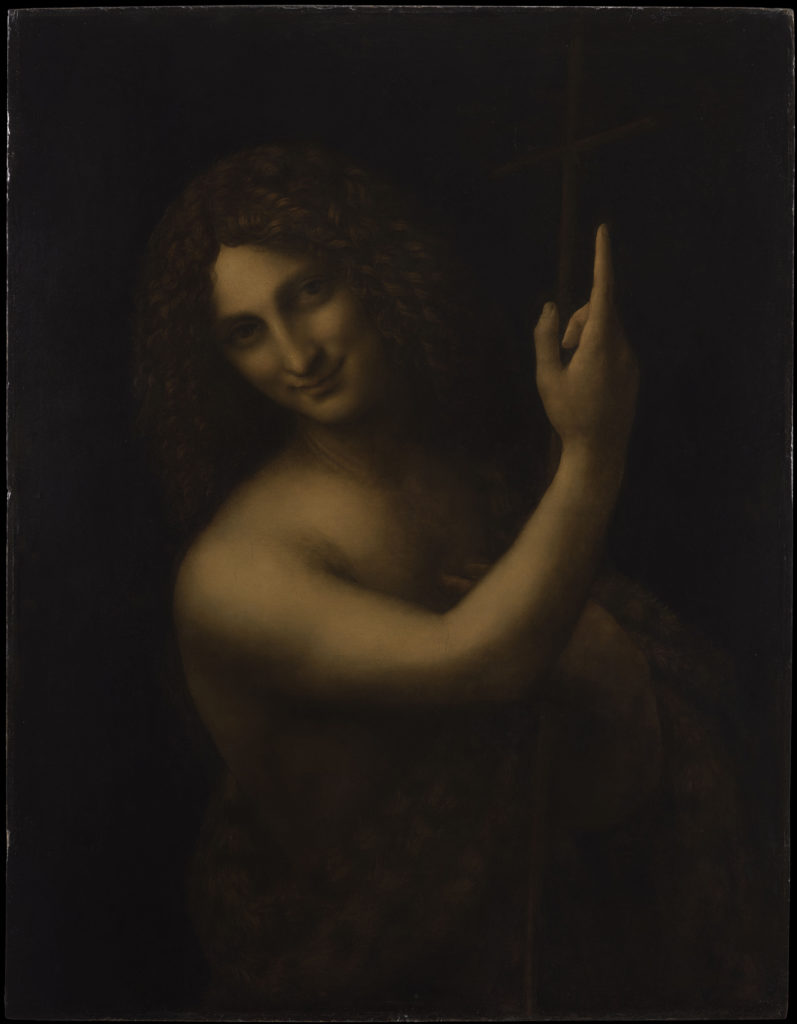Politics
The Louvre’s da Vinci Blockbuster Could Be a Casualty of Political Tensions Between Italy and France
Italy’s culture ministry is backtracking on important loans intended to mark the 500th anniversary of the master’s death.

Italy’s culture ministry is backtracking on important loans intended to mark the 500th anniversary of the master’s death.

Naomi Rea

Leonardo lovers, take note. Visitors to one of the most hotly anticipated shows of 2019 might find themselves disappointed thanks to efforts from Italy’s nationalist government to block previously agreed-upon loans of Leonardo da Vinci works from its national collection.
The Louvre’s blockbuster da Vinci show has pledged to bring an unprecedented number of the Renaissance master’s 17 known paintings together to mark the 500th anniversary year of his death, along with a large selection of drawings and a small but significant group of sculptures. But Italy’s new Eurosceptic government is having second thoughts about loaning its precious works to France in the landmark year, throwing a spanner in the works of the museum’s ambitious plans.
Lucia Borgonzoni, the undersecretary to the Italian culture minister Alberto Bonisoli, both of whom represent the ruling far-right party League, first told the media in November that Italy would cancel the loan of paintings agreed by Bonisoli’s (centrist) predecessor Dario Franceschini in 2017. The Louvre had asked for every painting owned by the Italian state. Paintings thought to be on the table included the Uffizi Gallery’s Annunciation (around 1472), Adoration of the Magi (around 1482), and The Baptism of Christ (around 1475), the Vatican Museums’ Saint Jerome in the Wilderness (1480), as well as seminal drawings including the Vitruvian Man and studies of the battle of Anghiari from the Gallerie dell’Accademia.
In keeping with the League’s “Italians First” agenda, Borgonzoni told Italian newspaper Corriere della Sera that fulfilling the French museum’s request would “put Italy on the margins of a major cultural event.” Calling the agreement “unbelievable,” Borgonzoni opined, “Leonardo is Italian; he only died in France.”
While the important loans to the Louvre hinge on the consent of the current Italian government, officials at the French museum may be left squirming. A spokeswoman for the Louvre declined to comment on the situation to artnet News, and said it was too early to share a list of the artworks confirmed for the exhibition, which is slated to run October 24, 2019 through February 24, 2020.

Leonardo da Vinci, portrait of a woman known as La Belle Ferronnière (1490). Paris, Musée du Louvre, INV. 778. ©RMN-Grand Palais (musée du Louvre) / Michel Urtado.
The Louvre already has five Leonardo paintings in its own collection. But so far, the only loan it has reportedly managed to secure from Italy is Leonardo’s La Scapigliata (The Head of a Woman) (1508) from the National Gallery of Parma. These are expected to be joined by The Virgin of the Rocks (about 1491/2–9 and 1506–8), loaned by London’s National Gallery, along with drawings from the UK’s Royal Collection, among others.
Contacted by artnet News, the French ministry of culture gestured to an interview given by culture minister Franck Riester to the French weekly JDD, in which he is asked about his Italian counterpart’s comments. “Let’s set aside the polemics and come back to what is essential: highlighting the legacy of these great artists,” Riester said. “Two exhibitions showing masterpieces of humanity’s heritage must be mounted thanks to exchanges between France and Italy, one concerning Leonardo da Vinci at the Louvre, the other concerning Raphael in Rome.”

Leonardo da Vinci, (1513). Paris, Musée du Louvre, INV 775. ©RMN-Grand Palais (musée du Louvre) / Tony Querrec.
The minister was referring to the reciprocal agreement from the French state to loan unspecified works by Raphael to Rome’s Scuderie del Quirinale museum for an exhibition next year. “We will pursue the discussions in a peaceful manner,” Riester added. But in her interview with the Italian newspaper, Borgonzoni did not seem convinced that the agreement represented a fair trade. She argued that the majority of Raphael’s work is already in Italy, and said that she was unsatisfied that no specific Raphael works had been named as part of the initial deal.
Italy’s ministry of culture did not respond to requests for comment by press time. Eike Schmidt, the director of the Uffizi gallery in Florence, told artnet News that while the previous government may have been working on an agreement to loan the works, such an agreement was never officially signed. “It appears that any such negotiation on a political level remained in an initial stage, if it ever got off the ground,” Schmidt said.
While the museum activated its procedure for validating the Louvre’s loan requests per its policy, Schmidt explained that this was just a formality. “It was evident from the beginning that the three paintings on panel by Leonardo da Vinci could not be lent; they have in fact been included in a formal no-loan list since 2009 for their very fragility.” The museum director did say, however, that some Leonardo drawings are in a fit state to travel. For the time being, however, the Italian state is taking care of the negotiations.
There may yet be hope for the Louvre’s top-billed show, as Borgonzoni told The Telegraph that Italy may be willing to renegotiate the terms of the loans. “Of course we are willing to sit at the table to discuss the Louvre’s wish list,” she said, “but in the spirit of reciprocal respect, which in past years has been missing.”